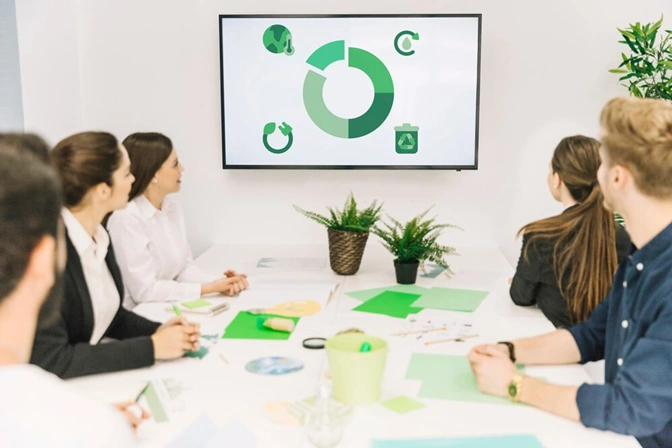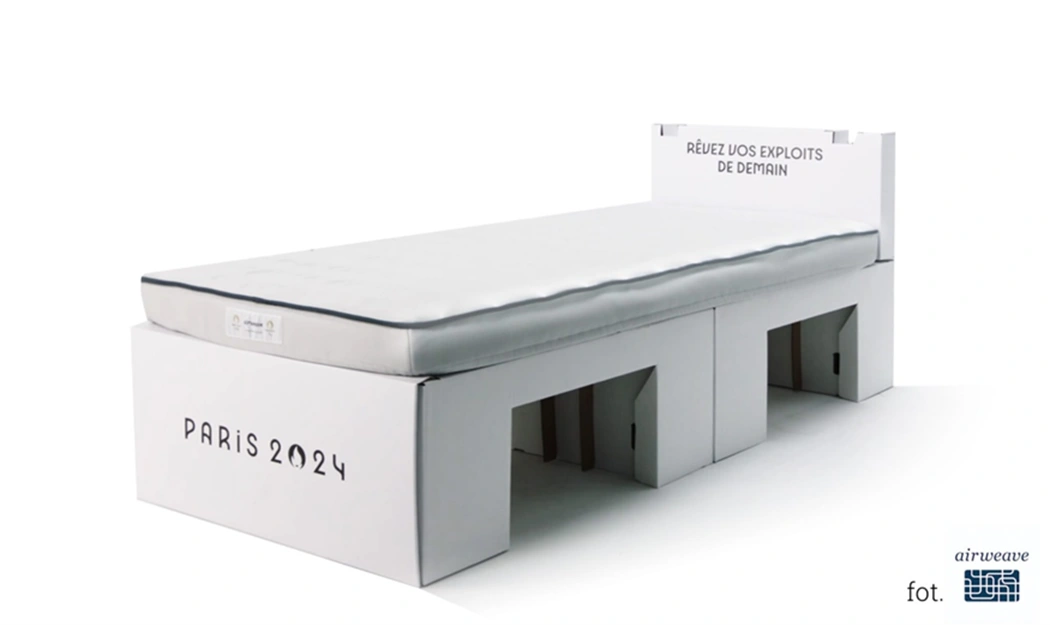Envisioning a Sustainable Future: Transitioning to a Circular Economy

Knowledge
- Life Cycle Thinking Approach: How to think from a perspective that drives circular economy.
- Environmental Sustainability and Impacts: Understanding the methodology useful for impact assessment.
- Circular Economy Principles: Learning the various concepts and approaches related to the circular economy.
Skills
- Analytical Thinking: Identifying key hotspots in environmental assessments and developing strategies to promote a circular approach while considering limitations.
- Problem Solving: Understanding how to advance a circular approach by modifying products or creating services.
- Collaboration: Working collaboratively to generate discussions and identify optimal solutions, and effectively communicating the benefits of the proposed solutions.
Responsibility & Autonomy
- Promotion of Sustainable Practices: Take responsibility for advocating and implementing sustainability in both personal and community contexts.
- Responsibility for Choices: Recognize the impact of personal actions and decisions on environmental conservation.
- Engagement with Movements and Strategies: Actively participate in promoting behaviors that align with circular economy principles.
Imagine a future where our demand for resources skyrockets by 70%, leading to significant increases in emissions and pressures on ecosystems. According to the United Nations, by 2050, we could see a 40% rise in greenhouse gas emissions, a 20% increase in agricultural land use, and a doubling of mineral extraction. This would result in a 10% reduction in forested areas and a 20% decline in other natural habitats.
Circular Economy: What, Why and How. | Jan Jonker | TEDxParcDuCinquantenaire
Without urgent action to change this trajectory, it's essential to explore alternative approaches and systems. One promising solution is transitioning to a circular economy—a model designed to create more efficient and resilient production and consumption systems. The circular economy is based on three core principles: (1) Preserve and enhance natural capital by regenerating materials and products, (2) Optimize resource yields by circulating materials, products, and parts, (3) Foster efficiency by minimizing waste through process optimization.
From these principles, seven different schools of thought have emerged, all promoting the circular economy by viewing biological systems as models for urban industrial systems. But theory alone isn't enough. Practically, what tools can we use to analyze the metabolism of materials in a specific territory or system? How can we define and promote practices like sharing, borrowing, reusing, repairing, refurbishing, and recycling existing materials and products for as long as possible? How can we encourage the creation of new businesses that support the circular economy or apply these strategies within existing companies?
What is a circular economy? | Ellen MacArthur Foundation
This WebQuest will challenge you to reflect on the environmental and economic opportunities of shifting from a linear to a circular system. You will explore various methodologies used in academia and industry, such as material flow analysis and life cycle analysis. By the end, you will understand the processes involved in identifying opportunities, making decisions to promote change, and overcoming the limitations that slow down progress.
You will conduct an analysis of the lifecycle of a daily-use product, identifying strategies to reduce its environmental impact using the circular economy framework.
Follow the steps listed below.
1. Team up!
Create teams of 3-4 members to work together on the project.
2. Get an idea of the circular economy framework
Go through the videos and resources to get an initial understanding of the topics.
2.1. Mass Flow Analysis
Mass Flow Analysis (MFA) is a methodology used to track and quantify the flows of materials within a defined system, such as a city, industry, or ecosystem. This approach allows for the identification of the input, output, and accumulation of materials at each stage of the life cycle, from raw material extraction to waste disposal. MFA is based on two fundamental and well-established scientific principles: the systems approach, where the analysis must be related to a specific group of interacting or interrelated elements, and mass balance, within a system where matter cannot disappear or be created spontaneously, based on the theory of mass conservation.
What is Material Flows Analysis? - Resource Efficiency Dictionary
MFA is useful for identifying inefficiencies, waste, and potential improvements in resource management processes. Additionally, it provides crucial data for developing circular economy strategies, promoting the reuse and recycling of materials. A series of handbooks have been developed to guide you step-by-step through the different stages of conducting an MFA, the most cited being the one proposed by Paul H. Brunner and Helmut Rechberger.
Here are some examples where material flows have been calculated to assess waste in the food and plastics sectors:
2.2. Life Cycle Thinking (LCT) and Life Cycle Assessment (LCA)
Life Cycle Thinking (LCT) considers the environmental, economic, and social consequences of a product or process throughout its life. This approach helps understand the environmental implications of a product, service, or system, identifying opportunities to improve resource efficiency, reduce costs, and develop more eco-friendly products, thus promoting sustainable decision-making and a systemic view of production activities.
When aiming to reduce the environmental impact of a process within a territory, you should address all life cycle stages and identify strategies to reduce emissions and resource use. Every product, service, or system can be improved from an environmental perspective, but this often involves high costs. Therefore, it's crucial to prioritize which steps are most relevant to maximize the investment. Life Cycle Assessment (LCA) is a useful methodology for this. LCA measures the environmental impacts throughout the entire life cycle, detecting which stages and aspects of the product generate the highest environmental impacts.
Within an environmental assessment framework, MFA provides the detailed material flow information needed, while LCA assesses the environmental, economic, and social consequences of a product or process throughout its entire life cycle. Here are two practical examples of integrating these methodologies:
3. Explore..
Choose a Product Select a product that you use or consume daily, composed of a few easily distinguishable elements. For example, choose raw food items such as vegetables, fruits, or meat.
3.1. Define Your System
Schematically describe the elements that make up the system from production to the disposal of the product. What processes make up the system? What materials are used in each process, and where do they come from? Where do they end up at their end-of-life?
3.2. Identify Hotspots
Once the system is defined, identify where there is the greatest inefficiency (e.g., resource waste) for the selected product. Take inspiration from the study by Caldeira et al. regarding which steps to consider and the waste generated in the different steps.
Once you have identified where the majority of waste is generated, describe the type of waste that is produced. Tip! The types of waste can be either liquid or solid, and identifying them is crucial to hypothesizing the possible use of one or more parts of the waste (e.g., orange peel or whole pulp discarded at home).
4. Putting Theory into Practice - Living Lab Activity
Now that you have identified the stage and type of waste generated, you will propose a strategy to promote a circular approach. In this section of the WebQuest, suggest a strategy to integrate a circular approach. Explore all possible strategies for reusing or recycling materials in another process and map out the flow related to its use. Research the best practices in the sector and how they address the circular approach. Once you are finished, identify the major limitations and opportunities your strategy may create within the system and propose a policy that could help stimulate this change.
5. Publishing the article and wide dissemination
Prepare a PowerPoint presentation or a video where you introduce:
- Description of the System Analysed: Provide an overview of the system you analysed.
- Inflow and Outflow Scheme: Present a drawn scheme showing the inflow and outflow of materials in the system.
- Critical Points: Highlight the critical points detected in the analysis to justify the selection of a specific stage.
- Proposed Circular Economy Strategy: Outline the strategy you propose to integrate a circular economy approach.
- Limitations and Opportunities: Show the limitations and opportunities associated with this strategy.
- Supportive Policy Proposal: Propose a policy that can support the development and implementation of this strategy.
The video should be a maximum of 3 minutes long and designed to be published on communication channels such as YouTube or Instagram.
Well done!
Circular Economy
- Circular Economy: What, Why and How. | Jan Jonker | TEDxParcDuCinquantenaire
- What is a circular economy? | Ellen MacArthur Foundation
Mass Flow Analysis
- What is Material Flows Analysis? - Resource Efficiency Dictionary
- Food waste analysis
- Plastics waste analysis
Environmental Assessment
By completing this WebQuest, you have gained valuable insights into the principles and applications of the circular economy. Through your exploration of methodologies such as Mass Flow Analysis and Life Cycle Assessment, you have applied these concepts to real-world scenarios. Working collaboratively in teams, you have analyzed a daily-use product to understand its lifecycle, identified key inefficiencies and environmental impacts within the system, and proposed a circular economy strategy to address these issues. Additionally, you have assessed the potential limitations and opportunities of your proposed strategy and suggested policies to support the transition to a circular economy.
Your presentations and videos have showcased your ability to critically analyze systems, pinpoint areas for improvement, and develop sustainable strategies. As you continue with your studies and future careers, remember to apply these circular economy principles and seek opportunities to integrate them into your daily life. The shift from a linear to a circular economy is essential for a more sustainable future, and your contributions play a significant role in this transformation.
Economy in Paris Olympic Game 2024
For the Paris 2024 Olympic and Paralympic Games, a forward-thinking approach to sustainability was adopted through the use of 'no-sex' bed frames crafted from corrugated cardboard. In total, 16,000 of these beds were placed throughout the Olympic and Paralympic Village.
The decision to use corrugated cardboard was based on its numerous environmental benefits. It is a sustainable, renewable resource that fits perfectly within a circular economy framework, being both recyclable and biodegradable. This choice reflects the Games' commitment to reducing their ecological footprint and advancing sustainable practices. Moreover, cardboard offers a combination of lightness and sturdiness, making it ideal for temporary use in athlete accommodation. The design ensures that the beds are both stable and comfortable, while also reducing environmental impact.
Originally conceived during the Tokyo 2020 Olympics by Airweave—a prominent mattress and bed manufacturer—the concept was realized for Paris 2024. As a key supporter of the Games, Airweave manufactured the bed frames in France from 100% recycled cardboard. After the event, these frames will be recycled in France, supporting a closed-loop system.
Following the Games, the beds will be donated to various French organizations, including the military, the Paris Opera Ballet School, Emmaüs, Ecole Hôtelière TSUJI, and the TSUJI Culinary Institute Group. This initiative not only underscores environmental stewardship but also contributes to social sustainability.
Link: www.corrugated-ofcourse.eu/creativity/corrugated-cardboard-beds-for-the-paris-olympics

